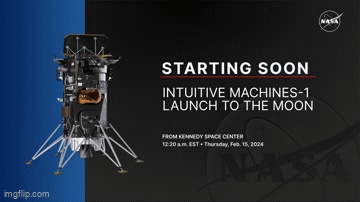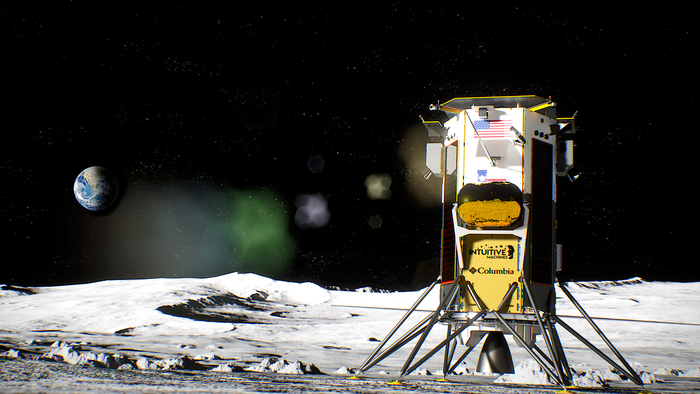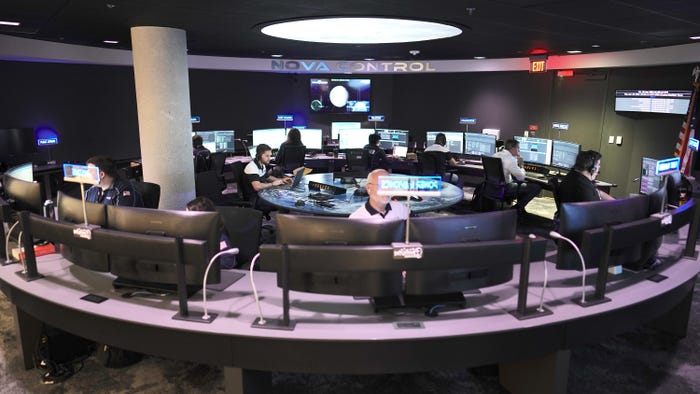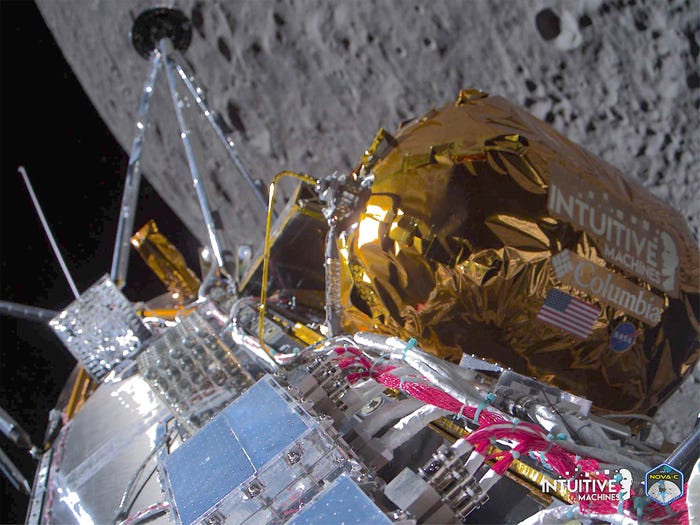How Intuitive Machines Overcame Last-Second Troubles to Stick the Moon Landing
Intuitive Machines’s Nova-C lander “Odysseus” made it to the moon but tipped onto its side.

At a Glance
- First U.S. Moon landing since 1972
- First commercial moon landing ever
- Innovated a landing solution following instrument failure
While other recent lunar landing attempts have failed in a variety of different ways, the Intuitive Machines Nova-C lander successfully touched down at the lunar south pole about a week after launching from Cape Canaveral aboard a SpaceX Falcon 9 booster.
However, while the lander was descending vertically at 6 mph for touchdown, it was also moving laterally at 2 mph. The company believes that on touchdown, with this lateral velocity, one of the lander's legs snagged on the surface, leading it to tip over onto its side.
Intuitive Machines has determined the lander's orientation using fuel level readings from its tanks, which indicate that the remaining fuel is puddled on the side of the tank rather than on its bottom, reported president and CEO Steve Altemus in a press conference.
In this position, Odysseus is getting sunlight on one of its side solar panels, and eventually, the sun will move into position to provide power to the panel on the lander's top, he said. The lander will probably get enough power to function for about ten days, he said.
This marks the first landing by a U.S.-launched vehicle since the Apollo 17 astronauts departed the lunar surface in 1972 and the first successful landing by a private launch service. Intuitive Machines is participating in NASA’s $2.9 billion Commercial Lunar Payload Services (CLPS) program, where contractors provide end-to-end delivery service for NASA payloads. They design, build, launch, and operate the mission independently, carrying NASA’s instruments as a paid service.
Another CLPS program contractor, Astrobotic, attempted a landing last month, but its vehicle suffered a fuel leak that made its powered descent to the lunar surface impossible, and it was crashed into the ocean after sling-shotting around the moon.
The landing site at Malapert A, a satellite crater to the large 69-km Malapert that is 300 km from the Moon’s south pole, is a candidate region for the Artemis III crewed landing.
The Nova-C, named Odysseus for this mission, carried NASA’s ROLSES (Radio Observations of the Lunar Surface photo Electron Sheath) experiment, the NDL (Navigation Doppler Lidar for precise velocity and range sensing, and SCALPSS (Stereo Cameras for Lunar Plume-Surface Studies).

Artist's conception of Odysseus on the Moon. INTUITIVE MACHINES
NASA also mounted the LN-1 (Lunar Note 1 navigation demonstrator) CubeSat and LRA (Laser Retro-Reflective Array), which is essentially a mirror that can provide a reliable target for spacecraft to measure their location using lasers.
The Embry-Riddle Aeronautical University EagleCam also hitched a ride. The plan was for it to eject at an altitude of 100 feet just before landing to capture photos of Odysseus’s touch-down, with the complications encountered the team kept the EagleCam aboard Odysseus with the hope of deploying from the surface, reported Altemus.
NASA checked out the instrument packages in flight to ensure everything was working properly before the landing. This turned out to be important because due to a procedural oversight before launch Odysseus’s own laser rangefinder for landing was never switched on.
Intuitive Machines sent the lander on an additional lunar orbit than originally planned so it could load a software patch that let it use the lidar aboard the NDL payload as its landing instrument. And it worked!

Intuitive Machines's Nova Control Center. INTUITIVE MACHINES
“We weren’t planning to use it in line with the actual mission coming down to the landing, but now we are,” observed NASA deputy associate administrator in the space technology mission directorate, Prasun Desai. “So, basically, it is now the primary system to help provide the velocity and altitude information so that the lander can land safely on the surface.”
However, while switching ranging instruments prevented the Odysseus from splattering into the lunar surface, the spacecraft still landed out of its intended orientation. This is important for it to be able to send a strong signal back to mission control, as its antenna is fixed and can’t be re-oriented.

Odysseus's descent to the landing site. INTUITIVE MACHINES
“We had a big roll maneuver at the end that was a challenge,” tweeted Intuitive Machines’s chief technology officer Tim Crain. “Next time I want antennae that can be pointed!”
A Japanese lunar lander that had problems with its descent last month ended upside down, leaving its antenna and solar panels out of position for intended operation, and now Odysseus has fallen onto its side, making it back-to-back landings that highlight the importance of getting the details exactly right.
About the Author(s)
You May Also Like





